Download Installation Manual
Transcript
Installation Manual - Fittings Fabrication from Thermobreak Tube and Sheet • 90˚ Elbow with Thermobreak Tube ……………………………………. • 45˚ Elbow with Thermobreak Tube ……………………………………. • 90˚ Elbow in 2 miter cuts with Thermobreak Tube…………………… • 45˚ Elbow in 2 miter cuts with Thermobreak Tube…………………… • 90˚ Elbow in 3 miter cuts with Thermobreak Tube…………………… • 45˚ Elbow in 3 miter cuts with Thermobreak Tube…………………… • Tee fitting using Thermobreak Tube…………………………………… • 90˚ Elbow with Thermobreak Sheet…………………………………….. • Valve fitting with Thermobreak Sheet…………………………………. 90˚ Elbow using Thermobreak Tube a. To achieve 45˚ angle, use miter box or cut in an angle to achieve the outer diameter of the insulation as illustrated above b. Apply rubber based solvent adhesive to both ends c. Join both ends firmly d. Apply Thermobreak foil tape on the joints to protect against any moisture penetration 45˚ Elbow using Thermobreak Tube a. To achieve 22.5˚ angle, use miter box or cut in an angle to achieve the 1/3rd of the outer diameter of the insulation as illustrated above (Note: The 1/3rd of the outer diameter cut is approximate values to achieve 22.5˚ angle) b. Apply rubber based solvent adhesive to both ends c. Join both ends firmly d. Apply Thermobreak foil tape on the joints to protect against any moisture penetration 90˚ Elbow using Thermobreak Tube (2-miter cuts) a. 2-miter cuts are mostly for long radius elbows b. To achieve 2 miter cuts, use miter box with 15˚ angle and a spacing of 10 – 15mm between them. c. Use rubber based solvent adhesive to joint the miter cuts d. Join the adhered ends firmly e. Apply Thermobreak foil tape on the joints to protect against moisture penetration. 90˚ Elbow using Thermobreak Tube (3-miter cuts) a. 3-miter cuts are mostly for short radius elbows b. To achieve 3 miter cuts, use miter box with 11.25˚ angle and a spacing of 10 – 15mm between them. c. Use rubber based solvent adhesive to joint the miter cuts d. Join the adhered ends firmly e. Apply Thermobreak foil tape on the joints to protect against moisture penetration. Tee using Thermobreak Tube a. b. c. d. Cut the two tubes as per drawing illustrated above Apply rubber based solvent adhesive to both ends Join both ends firmly Apply Thermobreak foil tape on the joints to protect against any moisture penetration 90˚ Elbow using with Thermobreak Sheet a. Check the size of the elbow – short or long radius. Take R1 measurement as shown above. b. Measure the circumference of the pipe. Halve the circumference of the pipe to obtain R2 . c. Use a reference point on Thermobreak sheet as the center and draw an arc using R1 as radius. Using the same reference point as center draw another arc with radius of R2. d. Cut out the first section of the elbow. Using this as template, cut another identical section e. Glue the outer edges with a rubber based solvent adhesive and tape it with Thermobreak foil tape. f. Apply adhesive at seam on other side and wrap around the elbow. g. Trim both ends to give it a straight edge. Valve fitting with Thermobreak Sheet (i) (iii) (ii) (iv) a. Cut Thermobreak sheet in to donut shapes with the outside and inside diameter matching the flanges. Install these donuts on the flange and valve stem areas. b. Use scar strips of Thermobreak to fill the body of the valve until it is the same dimension as the outside diameter of the flanges. Use rubber based solvent adhesive for scrap strips. c. Measure the circumference of the flange using a strip of Thermobreak (as shown in figure iii) d. Cut Thermobreak sheet as show in figure iv. The length A is obtained from iii. The width B is obtained by measuring the distance between the two outer donuts. The diameter of semi-circle C is obtained by measuring across the throat of the valve at a point under the flange where the stem enters. (v) (vi) (vii) (viii) e. The cut sheet (iv) is installed around the valve body using a rubber based solvent adhesive. f. The last piece of insulation to wrap the bonnet area is made as show in vii & viii. g. The overall length C is determined by wrapping Thermobreak on the bonnet. h. L1 is obtained from the middle of the valve body till the neck of bonnet area (as shown in vi). i. L2 is obtained by measuring the outer surface of the insulated valve to the bonnet neck area (as shown in vi). j. Y is the difference between L1 & L2. k. Cut the Thermobreak sheet in size C x L1. l. Divide it in to 4 quarters, at the end of the 1st , 2nd and 3rd quarter use Y as the distance from top and use this as reference to draw an arc. Connect the arc by staright lines and cut Thermobreak along these marks and install it on the bonnet area.











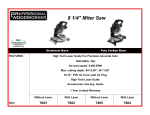
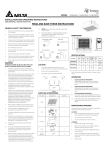
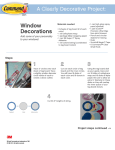

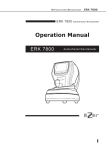
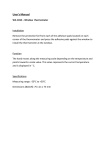



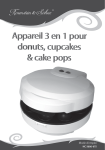
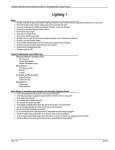
![MANUAL DON100 [00].indd](http://vs1.manualzilla.com/store/data/006095799_1-d1aaff0cf1c228ce06e57a23b8945995-150x150.png)
